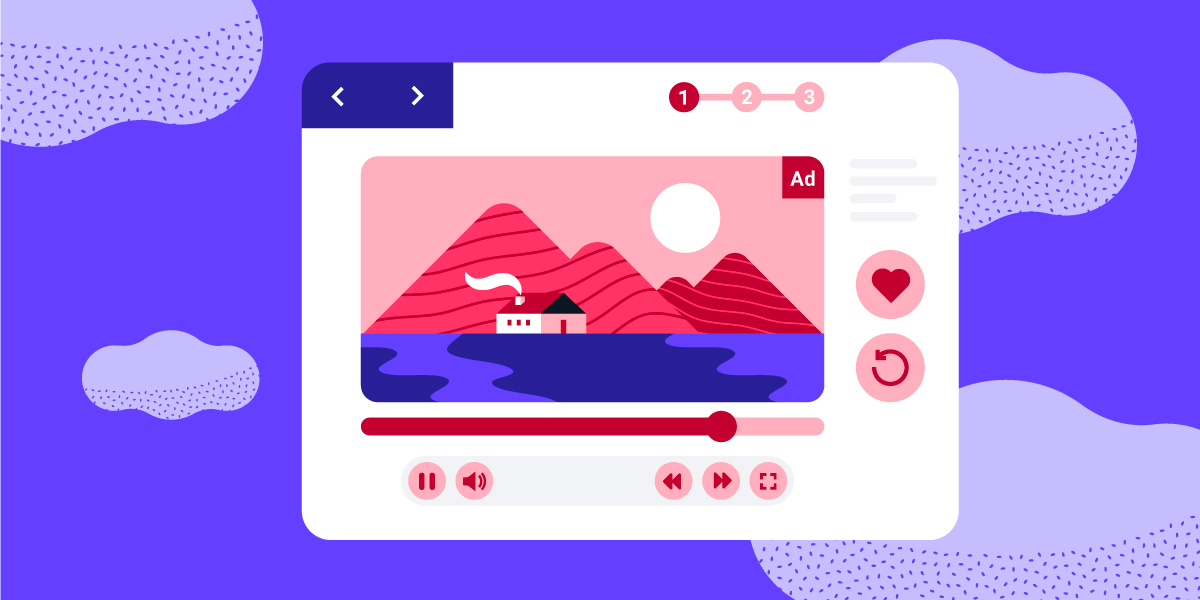Myriam is a Creative Strategist at StackAdapt with several years of experience creating engaging ads in a programmatic landscape.
With programmatic advertising, the possibilities for different targeting tactics can become very granular or fairly broad. As part of your overall digital strategy, you should not only consider your campaign tactics, such as geo and audiences, but also your creatives themselves. They will play a crucial role in ensuring your brand messaging is received, remembered and acted upon. So how do you know what kinds of creatives to use? Well, there are a plethora of options at your disposal—but I am going to focus on interactive ads, and dive in to how they can capture attention and provide success for programmatic campaigns.
Why Interactive
An interactive ad invites the user to perform an action in order to have something revealed within the ad itself, or to navigate towards a specific landing page. It adds a level of precision and complexity that cannot be achieved through static display ads. Whether the action is hovering or clicking—the audience is generally faced with an instruction to explore the ad for more details.
There are various benefits to including interactive ads throughout your campaign funnel. They provide a unique opportunity to engage with your target market, allow for brand interaction in your campaigns and create a lasting impression on your prospects.
How To Leverage Interactive
Incorporating interactive ads into your campaigns can apply at any stage of the funnel—whether that be to garner interest at the top of the funnel or encourage a conversion at the bottom of the funnel. Regardless of where you choose to use interactive ads, best practice is to consider the execution before your campaign launch. To show you what this might look like, I’ve provided some examples of how to leverage interactive ads with any campaign goal.
With an interactive ad, you want to allow the user to drive—letting them curate the ad for what matters most to them. Let’s consider an ad for luggage. There are a number of different options and features that would appeal to different members of the target audience. Maybe they care the most about having 360 wheels on their luggage. Or they could be looking for luggage that has multiple features and will explore the whole ad to see what is applicable to their needs. Offering an interactive experience to the viewer provides a huge advantage—you are able to say more within the same canvas space. Here is what the ad might look like:
With the ad being interactive, you can outline 4 distinct features of a single product, without having text present on the ad—allowing you to save on ad real estate, and let your images do the talking. This is especially important for smaller ad sizes which are quite common across desktop and mobile channels.
If you are looking to incorporate interactive ads into the top of your funnel, as part of a prospecting campaign, you may want to showcase multiple products. This is called a carousel interactive ad, and might look like this:
The individual products in the carousel can all click out directly to the product page, while still having a call to action (CTA) button that leads to the page showcasing all items. You can also track these clicks per product to help identify best sellers, and gain insights like if a certain demographic is more interested in a series of products.
Although they may have clicked on one of the products from the carousel, they may end up viewing multiple products on your site—so you want to remind them of the last one they viewed. So, as part of your lower funnel tactics, you can run a dynamic retargeting campaign showcasing that last product, creating a more personalized experience. This example would work extremely well for a conversion goal to increase online sales.
What’s interesting about interactive advertising is that you can collect data from the first point of contact. So not only discovering which products may be more popular, but learning more about how your target market interacts with ads. Interactive ads present options to the viewer—not only in the content that is shown, but also in the landing pages—because you can incorporate multiple buttons and touch points.
If you’re looking to learn more about your target market and focus on conversions, then consider using the ad to collect valuable data about your ideal customer. With an interactive ad, you can ask the user what the weather is like where they are, and discover what type of vacation they might prefer.
Even if the viewer clicks all weather options, you will be able to gauge interest in certain locations based on the conversion events. This example would be ideal to include in a retargeting campaign, once the target market is familiar with your brand. An audience is more likely to engage with the options in the ad if the question comes from a brand they recognize.
Interactive For The Win
Combining human behaviour with data is where interactive ads really excel. Instead of narrowing your targeting, let the ads do the work for you to find out exactly who your prospects are and what they are looking for. This will help increase your scale and also allow you to discover your target market in a more specific and individualized way. This type of data could change by the season, or even monthly, but collecting this data is much easier when it’s all within the execution.
Want to run programmatic campaigns with interactive ads? Request a demo to learn more about StackAdapt.





